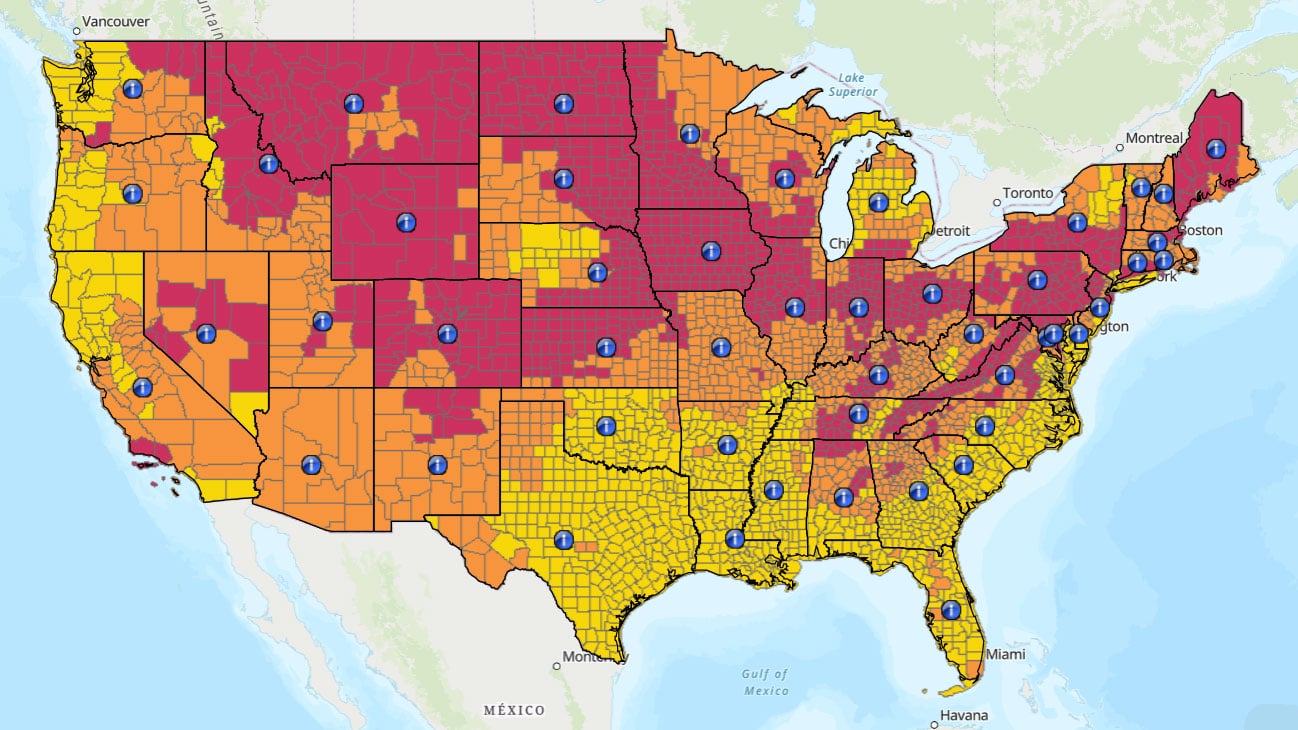
Radon does not announce that it is in your home, and unless you have your home tested, you may never know that high levels of this dangerous radioactive substance are present. Radon can enter your home in a number of different avenues, so it is important to have your home tested and evaluated for dangerous radon levels, even if you do not suspect you have a problem.

Protecting Your Home
Where Does Radon Come From?
Radon is a naturally occurring substance, and unfortunately for homeowners it is found in virtually every part of the country. Radon is able to find its way into your home through even the smallest cracks, and no home is airtight enough to prevent radon from coming in. Since the pressure in the interior of your home is lower than that of the soil surrounding your home, radon is able to find its way into your home through the foundation. The foundation does not have to be cracked to allow radon to enter, although a crack in the basement wall or home foundation can certainly make the problem worse.
Radon Through Basements
The difference in pressure from the outside to the inside of a house acts like a vacuum, sucking the radon gas from the surrounding soil and environment into the interior of your home. Radon typically enters your home through the basement, then seeps up into the living space, putting yourself, your home and your family at risk.
In addition to the soil and foundation of your home, radon can also enter your house through contaminated well water. Radon is present in and around the water table in many parts of the country, and that makes it all too easy for the gas to enter your home every time you turn on the tap. When you take a shower, you could inadvertently be letting higher and higher levels of radon into your home.

E.P.A. BASIC RADON FACTS
EPA 402/F-12/005 | February 2013
Radon is a naturally occurring radioactive gas released in rock, soil and water that can build up to dangerous levels inside any home; this means new and old homes, well-sealed and drafty homes, and homes with or without a basement. Radon gas is odorless and invisible and the only way to know if your home has a radon problem is to test for it.
The U.S. Surgeon General recommends ALL homes be tested for radon gas. Test kits can be ordered online, and sometimes you can get a test kit from your state radon office. You also can hire a qualified tester to do a radon test for you. Your state radon program may keep a list of these professionals.
Breathing radon can increase your risk of lung cancer.
Radon is the number one cause of lung cancer among people who do not smoke. It is the second leading cause of lung cancer for people who do. The EPA estimates that radon causes more than 20,000 deaths from lung cancer each year in the U.S. If you smoke and your home has a high radon level, your risk of lung cancer can increase even more.
Radon has been found in every state.
Homes with high levels of radon have been found in every state. In fact, radon levels can vary greatly from home to home–even levels next door can be very different. Radon is measured in picocuries per liter of air (pCi/L), a measurement of radioactivity. In the United States, the average indoor radon level is about 1.3 pCi/L. The average outdoor level is about 0.4 pCi/L. The U.S. Surgeon General and EPA recommend fixing homes with radon levels at or above 4 pCi/L. EPA also recommends that people think about fixing their homes for radon levels between 2 pCi/L and 4 pCi/L.
You should test for radon.
Testing your house for radon is easy. If your house has a radon problem, it can be fixed. Fixing a radon problem reduces the risk of lung cancer for you and your family. A simple test will tell you if your home has a high radon level. Most radon tests last between 2 and 7 days. Radon is a serious health risk; it can be reduced easily and cost-effectively. Take action today. Encourage your friends and family members to do the same!
You can fix a radon problem.
Help is available to fix a radon problem. You can call your state radon office to find qualified radon mitigators in your area. Also local companies with radon mitigators are in the phone book or online. The cost to reduce radon depends on how your home was built and how you use it. Most homes can be fixed for about the same cost as other common home repairs.
New homes can be built with radon-resistant features.
Building new homes with simple and cost-effective radon-resistant features can reduce radon entry. Contact your builder or visit https://nepis.epa.gov/Exe/ZyPURL.cgi?Dockey=2000T92H.txt for more information. Every home should be tested before, or soon after, you move in. Even homes built with radon-resistant construction features should be tested. If high radon levels are found, it is easier and costs less to reduce radon levels in homes that are built radon-resistant.
